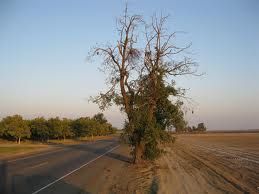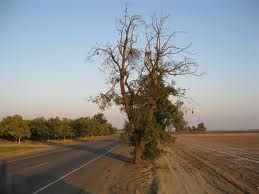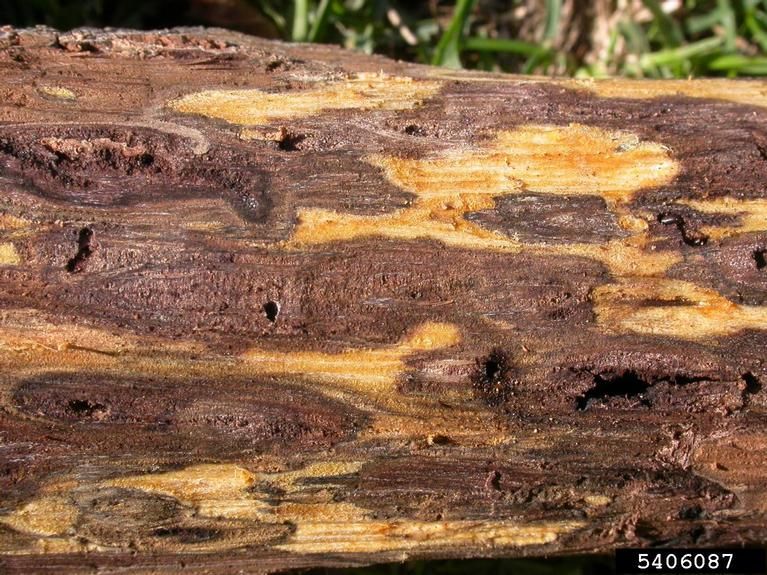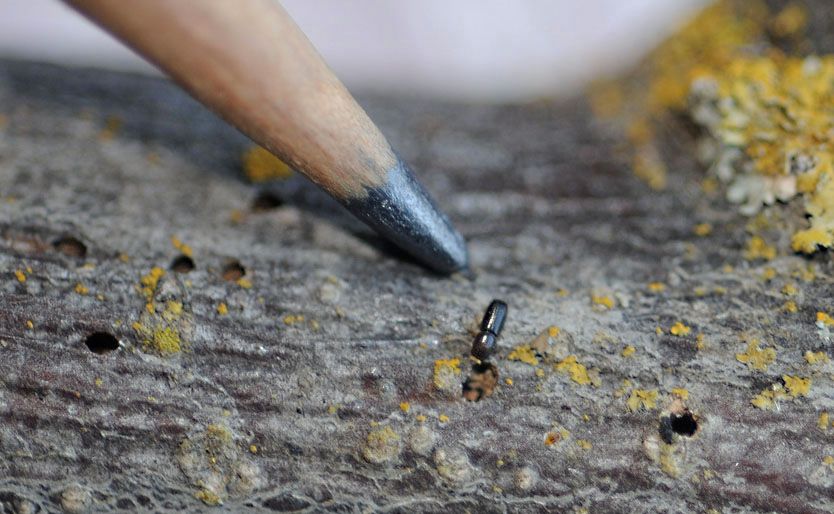
Here you can see the early death of the upper canopy. The lower branches will continue to survive until the disease reaches the trunk.
The Eastern Black Walnut, a staple in furniture and cabinet making since the settling of the nation, is under attack.
Walnut trees, especially the black walnut, are being devastated throughout the country by Thousand Cankers Disease (TCD), a fungal disease carried by the walnut twig beetle. The fungus is carried by the beetle and enters the tree as the insect burrows under the tree’s bark.
The introduction of this fungus causes black cankers to form upon each entry. These cankers restrict the flow of nutrients from the roots to the branches and upper tree. With a potential infestation rate of 35 beetles per square inch, these cankers can quickly cover enough area to starve trees.
Unlike most fungal diseases, TCD shows little to no external symptoms. The disease is kept within the first 2cm of wood beneath the bark, also called the phloem.
The yellowing of the upper canopy is the earliest signs of TCD. At this stage, the tree may be treated with trunk injections of fungicides, insecticides, and fertilizers to stimulate the flow of nutrients.
Death of the upper branches then commences, with the last stages including large cankers forming around the trunk of the tree. From initial onset, the average life expectancy for the black walnut is 3 years.
The spreading of the disease occurs when rough lumber is transported from place to place. By staying aware of state quarantines on lumber, buying local firewood only, and by monitoring the black walnuts in your area, Thousand Cankers Disease can be stopped.
If you are looking for more information on the disease or prevention, visit www.thousandcankerdisease.com.























Log in or create an account to post a comment.
Sign up Log in